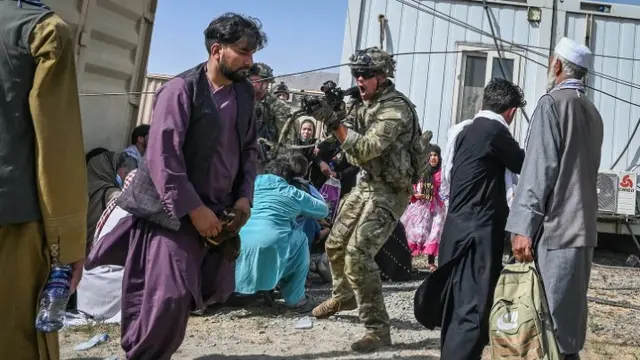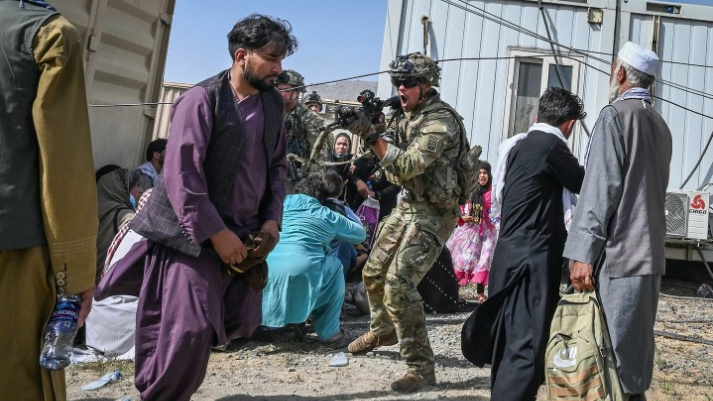
Jam-packed road to the airport
In normal times, it's a 10-minute and less than five-kilometer drive to Kabul airport. But today, our car had to stop every few hundred meters.
Many people heading to the airport had already abandoned their vehicles and started walking with their backpacks. The armed police officers at checkpoints were nowhere to be seen.
Because we had equipment in the car, the cameraman said we should keep driving.
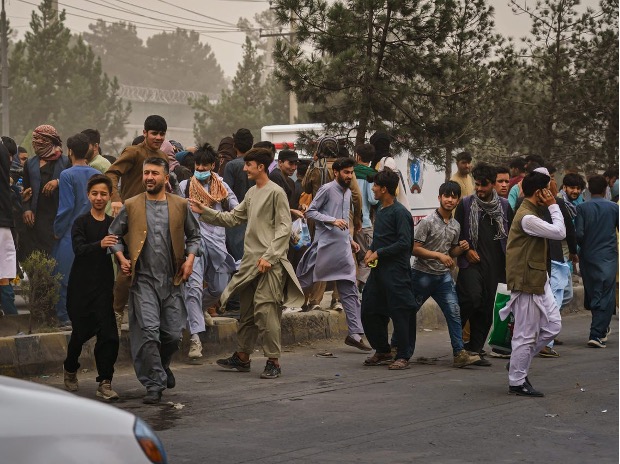
Crowds of people were making their way to Kabul airport. /CMG
The situation here is not good. In fact, since February last year, when the United States and Taliban reached an agreement, many people who had the financial meansbut felt uncertain about the future began to leave.
Some of my friends have worked as interpreters and drivers for the U.S. military. The Americans promised them immigration visas after they had withdrawn the last troops. The number of Afghans applying for the special visa is said to number at least 80,000, but so far only a few thousand have left.
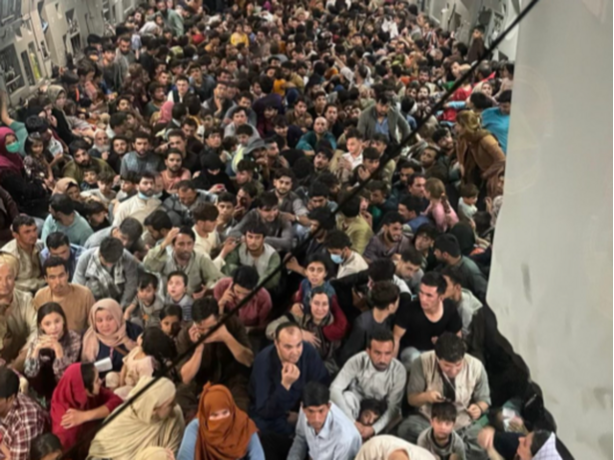
Afghans crowd into a U.S. military jet. /CMG
Taliban with U.S. weapons
A cargo plane was hovering overhead, while men with weapons kept moving past our car. Twenty years ago when I started university, the Taliban left Kabul. I remember back then they had some old-fashioned Soviet rifles. Now, most of them are equipped with American-style weapons, with some even dressed in U.S. Special Forces uniforms.
In the distance, a group of men wearing headscarves stood on top of a Hummer, one of them brandishing a rocket launcher.
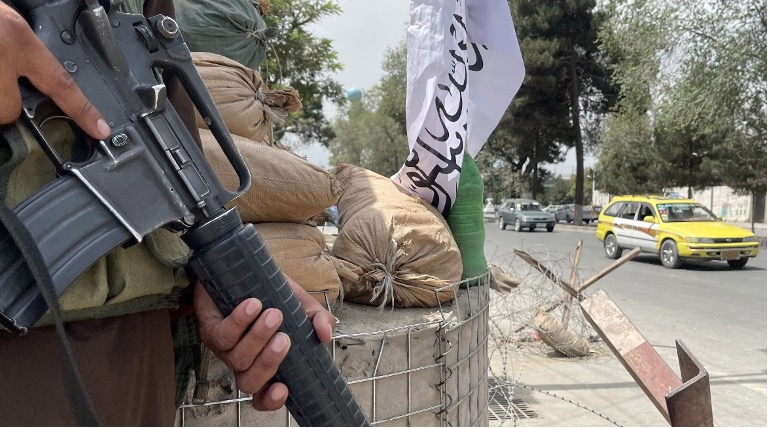
A Taliban fighter carries a U.S.-made assault rifle. /CMG
As more and more vehicles were left in the middle of the road, all of them models from the 70s and 80s, we had no choice but to take the equipment and start walking.
Then suddenly, there were sounds of gunshots ahead, and the crowds flooded backward immediately. I instinctively clenched my phone tightly; my colleague held on to the camera.
The $34,000 'one-way ticket'
As the gunshot sounds quietened down, the crowd rushed back toward the airport as if being pushed by an invisible dike.
The further we moved forward, the more people there were, obscuring the lower part of the airport's exterior fence, with only the barbed wire on top reflecting blinding lights.
Someone told me that yesterday U.S. soldiers opened fire inside the airport and turned away anyone who looked local. They also threw out tear gas grenades from inside the airport.
Most people outside the airport did not have a visa. Many didn't even have a passport. They came with nothing but the hope to get lucky.
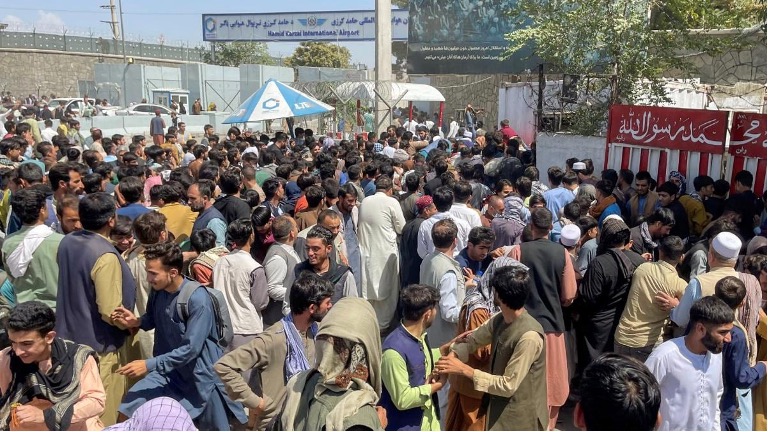
Afghans outside the Kabul airport. /CMG
A man in his 50s told me that he bought a ticket for $34,000 two days ago that he thought would get him on board a U.S. military jet bound for Qatar. But the U.S. army said the airport was being only used for evacuations of non-Afghans for the time being, and the Taliban were also setting up checkpoints. There was no way to get into the terminal, and his friend's phone was off.
Stopped by both U.S. military and Taliban
The cameraman tugged me and pointed to the fencing wall. There, a U.S. soldier wearing sunglasses shouted something at me while gesturing in an exaggerated manner for us to go away.
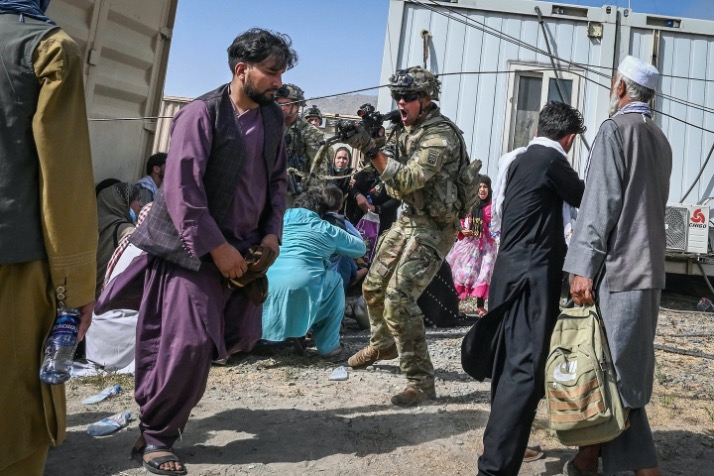
A U.S. soldier with a gun tells Afghans to leave the airport. /CMG
Then I felt a push from behind and looked back. It was two Taliban fighters. I explained to them that one of their commanders allowed us to film there. But one of them shook his head and said they didn't know this man from Kandahar. He was from the southern province of Helmand.
We handed over our phones and camera and watched them delete all our footage.
Meanwhile, U.S. troops inside the airport and Taliban fighters outside were shouting at us, at the same time: "Go, quick. Go…"
The correspondent's name has been omitted for safety reasons.
 简体中文
简体中文

